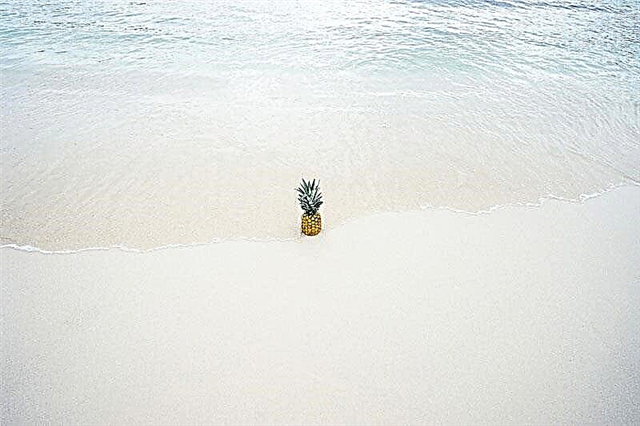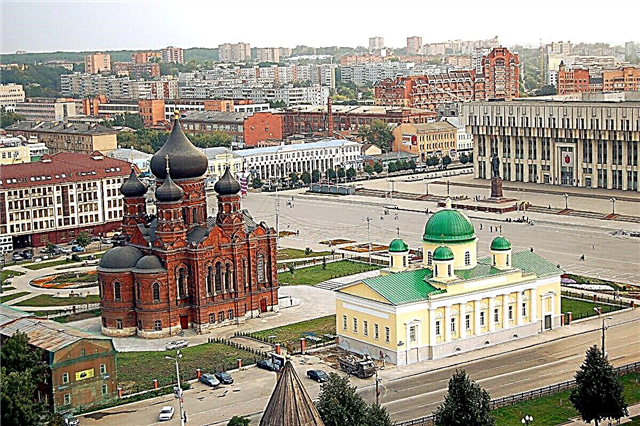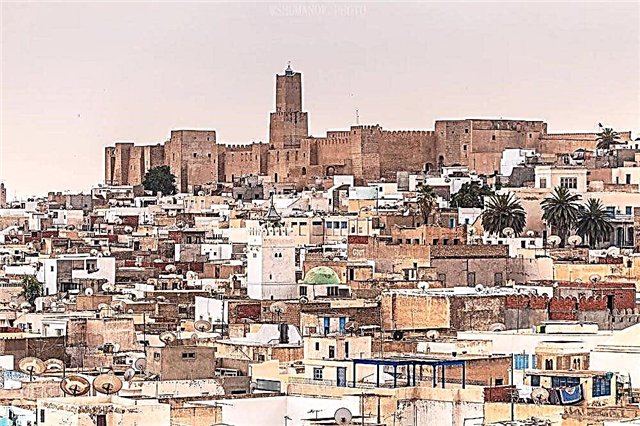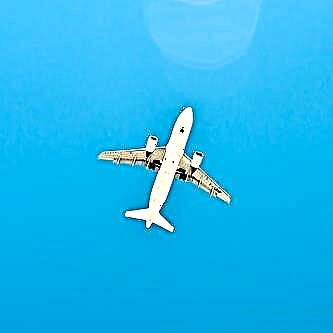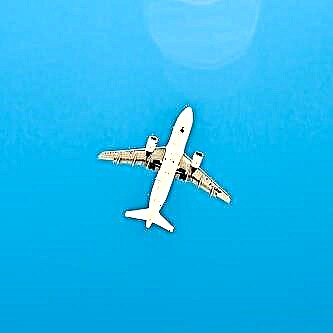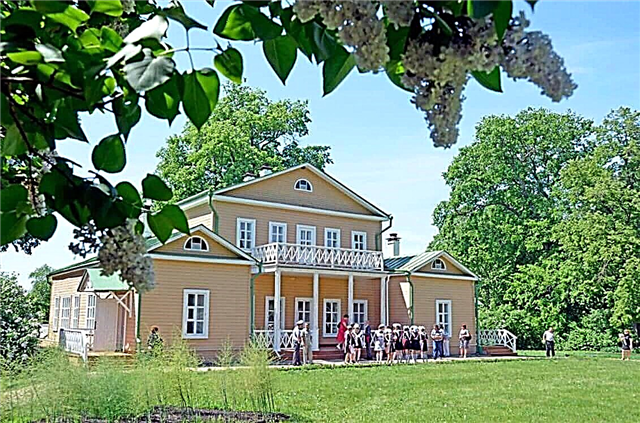The Penza region is a region of Russia rich in unique sights, such as the Moksha fire tower or the museum of one painting. Outstanding people of the country lived and worked here at different times, and they are not forgotten: the Belinsky and Radishchev Museum-Estate is a direct proof of this. Architectural buildings of the past coexist in the region's large cities with modern buildings and well-maintained streets. Visitors and locals do not bypass the embankment in Sputnik and the zoo in Penza. One of the visiting cards in recent years is "Tarkhany" - a museum and reserve, a Lermontov place, famous throughout Russia. Religious themes are also widely represented: the Trinity-Scanov Monastery with its cave complex is especially noteworthy.
The most interesting and beautiful places in the region
List, photos with names and descriptions of popular attractions that are worth seeing!
Museum-reserve "Tarkhany"
Located in the village of Lermontovo. Founded in 1926, open to the public a few years later. Previously, it was the estate of the famous writer’s grandmother. The exposition is completely devoted to the life and work of Lermontov. In addition to the estate, there are a couple of churches, a chapel, and a large park on the territory. All this is preserved in an authentic style. A kiosk with souvenir products and a cafe are open for tourists.

Sculpture Park "Legend"
Located in the Mokshansky region. Founded in 2008. The largest of its kind in Russia. More than 300 sculptures are located in the park. They are made of different materials, from wood to marble. Some are impressive in their size. The authors of the works are renowned masters from all over the world. A gallery of contemporary art works periodically. A symposium is held regularly.

Museum of Glass and Crystal in Nikolsk
Founded in 1789. The collection began at the factory: in one of the rooms, remarkable samples were simply collected. The permanent exhibition has about 5 thousand exhibits: all kinds of jewelry, decor items, dishes and more. They are divided into subgroups in chronological order. It is located on the second floor of the museum building, and on the first floor there are temporary exhibitions.

Trinity Scanov Monastery
Female was originally male. Located in the village of Skanovo. Founded around the middle of the 17th century. Throughout its history, it has experienced a great fire, closure, looting. The main relic is the icon of the Mother of God, which is also called "Trubchevskaya" from the place of writing. It is dated 1765. There is a three-level cave monastery nearby. It is partially destroyed, more than 600 meters of passages have survived.

Narovchat cave complex
Male. It is located near the village of Scanovo. Restored in 2008. It has three tiers. In total, about 20 cells were dug. The length is over 600 meters. Services are held daily. A temple was built at the entrance. Nearby there is a holy spring with a font. Excursions accompanied by a novice are possible on an ongoing basis along the main route. Inspection of the entire complex - with the permission of the abbot.

Penza Regional Picture Gallery
Founded in 1891. It bears the name of Savitsky. The collection consists of canvases painted both in our country and in Western Europe. Not only classical styles are presented, but also contemporary art. On the basis of the gallery, various creative projects are carried out, for example, "School of Joy". The exposition occupies two buildings. There is also a mini-shop with souvenirs and brochures about the museum.

Park of Culture named after Belinsky
Located in Penza. Founded in 1821. Area - 370 hectares. At the time of its creation, it was called the "Public Garden" and was opened, since in every city there was to be a similar resting place. At various times, it was visited by heads of state, writers, scientists. Among the current objects of the park stand out: attractions, an open-air dance floor, several cafes of different directions, a botanical garden.

Embankment in Sputnik
Located in Penza. Named for the microdistrict. Divided into conventional zones. The Health Trail is 3.2 km long and includes jogging and cycling trails. There is a fountain complex on the square with the amphitheater. The beach area includes a cafe, rental equipment for recreation, changing cabins, etc. The rest of the space is reserved for flower beds, benches, sculptures and wide avenues.

Reserve "Privolzhskaya forest-steppe"
Located in the west of the Volga Upland. Founded in 1989. Area - 8,373 ha. It was created to preserve the northern steppes and the unique forest belt. Divided into clusters, each contains plants and inhabitants, listed in the Red Book. There are specially protected areas where economic activity is completely prohibited and the influence of man on natural processes is significantly limited.

Museum-estate of V.G.Belinsky
Located in the city of Belinsky. Opened in 1938 in a house previously owned by the critic's family. The collection of the museum consists of genuine things dating from the 17th - 19th centuries. Subsequently, two more were added to the main building - a merchant's house and a former school, part of the exposition was transported there on a permanent basis. The estate has an impressive library, a lecture room and a cinema.

Museum of one painting named after G.V. Myasnikov
Located in Penza. Founded in 1983. There are no analogues in the world. Named after the local historian who came up with this idea. In different periods, different paintings are exhibited in the museum, but the exposition always consists of one canvas at a time. The tour includes not only a detailed acquaintance with this work of art, but also with the era in which the artist lived. In 2018, "Girls-Sisters" by I.K. Makarov.

Museum-estate of A.N. Radishchev
Located in the village of Radishchevo. Founded in 1845. In these parts, the writer spent the first years of his life. The church of that time has survived; it is the place where part of the exposition is located. The rest of the exhibits are housed in the zemstvo school. Many events and cultural programs are held on the basis of the estate museum. They are associated with literature, regional history and folklore.

Zolotarevskoe settlement
Archaeological site, circa 3rd century. Located near the village of Zolotarevka. It is famous primarily for the battle between the local defenders and the Mongol army, which took place in 1237. Research work has been carried out since the end of the 19th century. New evidence and artifacts are constantly being found. I am arranging military reconstructions nearby. Excursions are discussed in advance.

Ardymsky shikhan
A hill located in the Penza region. It was declared a natural monument in 1995. Area - 4 hectares. On its entire surface, plant species, which are quite rare for this area, grow. Including: ephedra bicolor and low almonds. Nearby there is a spring called "Forgiven", since, when given, the water from it absolves sins. The second spring dried up in the early 2000s.

Church of the Transfiguration of the Lord in Penza
Founded in the 17th century. The oldest preserved stone building in Penza. It was originally part of a male monastery. The monastery was moved to another place, and the church became an independent unit. Has three thrones and five chapters. In the years of desolation, there was a hostel, an archive, and then a library. Returned to the Russian Orthodox Church and completely restored by 1994.

Trinity Church in Ershovo
Built at the beginning of the 19th century. Later, a chapel was added to it. She also served as a burial vault. The main relic is an icon of the Mother of God called "It is worthy to eat." According to the legend, it was brought by pilgrims from Jerusalem more than 250 years ago. There is a slab nearby: the father of the Decembrists, the Belyaevs, is buried here. The temple and buildings nearby are in need of restoration work.

Penza Women's Trinity Monastery
Founded in 1689. The first building was the Trinity Church, and 27 nuns, who had not previously belonged to any of the monasteries, finally found their home. There is a necropolis near the monastery. Although the Russian Orthodox Church returned the monastery in the 90s, its active restoration began almost 10 years later. By 2013, the remains of the abbess were reburied, and all buildings were restored and new buildings were built.

Monument "First Settler" in Penza
Installed in 1980. Dedicated to the founders of the city. The monument consists of a small pedestal on which a man stands next to a horse. This settler is both a peasant and a warrior: in one hand he holds a very long spear, which he holds vertically, and in the other - a plow. This is due to the history of the region: the land needed not only cultivation, but also constant protection.

Penza Zoo
Created in 1981. The area is over 10 hectares. The number of inhabitants is more than 2 thousand. There are open-air cages with reservoirs, as well as a building for wintering heat-loving animals. About 70 pets are representatives of the species listed in the Red Book. The most famous inhabitant is the lion Simba, which has become the symbol of the zoo. He lived here from childhood until 2017: he died at the age of almost 20.

Traffic light tree in Penza
Installed in 2011. The idea was taken from the British: there is a similar art object in London. The tree is assembled from 36 old decommissioned traffic lights. It does not carry out the usual function of traffic regulation, being a decorative adornment of the square where it is located. Although the tree was originally planned to be turned on only on holidays, it now lights up along with other city lanterns every evening.

Penza Botanical Garden
Founded in 1917. Area - 4.2 hectares. He has several purposes. Tours are conducted to educate tourists and locals. Plants undergo acclimatization here. Students of universities conduct their research projects on the basis of the garden. There are three departments: dendrological - park and nursery in one, systematized collection of herbaceous plants and floral and decorative. There used to be a greenhouse, but it was destroyed by fire.

Penza Regional Drama Theater
Founded in 1793. The first play to be staged is The Deceiver. Its author is Catherine II. After the fire in 2008, the building was rebuilt. Has been meeting the audience again since 2010. The small stage is reserved for theatrical experiments: performances-monologues, chamber performances, etc. The most famous director is Semyon Reingold, who worked here until his death. Honored and folk artists regularly perform in the troupe.

Meyerhold House
Located in Penza. Founded in 1984. Karl Meyerhold lived in this building for almost 15 years. The fund has about 10 thousand exhibition objects: personal belongings, documents, photos, interior items. The main task of the museum is not only to preserve the memory of the theater director, but also to create new performances based on his achievements and works left after his many years of research into theatrical life.

A. Malyshkin Museum
Located in Mokshan. Opened in 1977. Initially it was part of the local history museum, gained independence in 2007. The exposition is constantly expanding. It includes not only objects related to the life and work of Malyshkin, but also evidence of the era, the furnishings of houses of that time, documentary evidence and photos. The tour covers several directions and has subsections.

Museum of Living Water "Kuwaka"
Located in the village of the same name. Opened in 2010. The source was known three hundred years ago. The water gushed from the ground in a powerful stream and was distinguished by its purity. They began to pour it in 1913. Now the museum is divided into sectors: you can learn about production, about famous visitors to the source, and also taste the water. Nearby there is a trout farm and "Kuvakskaya izba", which recreates the life of peasants and offers to try local treats.

Museum of folk art in Penza
Founded in 1975. It is located in a unique building - a sample of wooden architecture of the mid-19th century. The collection consists of Abashevo toys, down-knitting, embroidery, tableware, national costumes, art objects of various orientations, made by local craftsmen, and others. There are areas for temporary exhibitions, and the funds exceed the permanent exhibition by several times.

Kerensky Tikhvin monastery
Male was originally female. Located in the village of Vadinsk. Founded in 1683. It existed for less than a hundred years, was closed, but retained the status of a community. Reborn, becoming feminine. There are four churches on the territory of the monastery. In addition, there are residential and utility buildings, as well as a museum. It tells not only the history of the monastery, but of the entire region, that is, it is also a regional study.

Holy spring "Seven Keys"
Located in the village of Russkaya Norka. A log house was built around, from it a path was laid to the font. According to legend, the springs appeared after the murder of seven righteous hermit monks here in the 17th century. An icon later appeared on one of the sources, which did not want to stay in a nearby temple and returned to the place of discovery. Then a chapel was built here to store the icon and hold ceremonies.

Fire tower in Mokshan
Built in the 19th century from red bricks. The height is over 15 meters. Previously, there was a defensive fortress on this place. It is conventionally divided into three tiers. There is a wooden door on the first one, and on the other two there are loopholes, probably decorative. Nearby there is a church, made in the same color scheme and in the same style, as well as a memorial stone erected in honor of the three hundredth anniversary of the founding of the city.

The Golitsyn estate in Zubrilovo
Built in the 80s of the 18th century in the classicism style. She survived the fire and destruction. The complex includes, in addition to the main house: buildings for servants, a chapel, a bell tower, a church, a hospital and the ruins of a bath. Only ruins remained of the buildings, all internal details were lost. The current state is deplorable: the surviving buildings need urgent restoration and are being destroyed by the influence of time.



